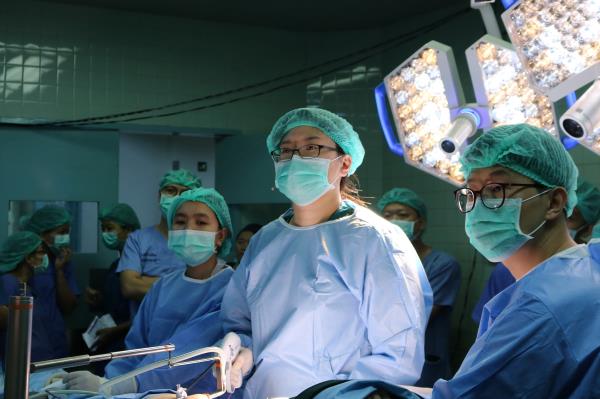Asan Medical Center (AMC)’s endocrine surgeons Sung Tae-yeon and Kim Won-woong handed down the skills of “underarm endoscopic thyroidectomy” to Myanmar for the first time, the hospital said.
The surgery involves an incision in the armpit, inserting an endoscope, and removing cancer in the thyroid gland.

The surgery at the New Yangon General Hospital was aired live through the “Live Surgery” session of the 22nd Surgeons’ Conference of Myanmar Surgical Society. More than 100 Myanmarese surgeons watched the surgical procedure in detail, Asan Medical Center said.
In a thyroidectomy, a surgeon removes part or all of the thyroid gland to treat thyroid cancer, thyroid nodule, and hyperthyroidism. It usually involves cutting the skin around the neck by six to seven centimeters. However, cutting the skin around the neck can leave a noticeable scar. To improve patients’ satisfaction, surgeons are now using a robot or endoscope to cut the armpit minimally in thyroidectomy.
In Myanmar where medical service quality has been relatively low, surgeons have performed the conventional thyroidectomy only.
The team of Professors Sung and Kim were asked by a Myanmarese surgeon, who learned the advanced surgery skill at Asan Medical Center in early this year, to come to Myanmar to teach the skills of the endoscopic thyroidectomy.
“In Myanmar, too, there is a growing interest in minimally invasive surgery. I am very proud to have introduced the endoscopic thyroidectomy that has never been performed in Myanmar,” Sung said. “I will continue to pass on the endoscopic thyroidectomy to other developing countries where medical quality is poor.”
Asan Medical Center said its thyroid team performs an average of 2,000 thyroidectomies a year.
The incidence rate of hypocalcemia, which is the most common complication of parathyroid gland injury during a thyroidectomy, is generally about 20 percent. However, Asan’s team pushed down the rate as low as 5 percent, the hospital said.

